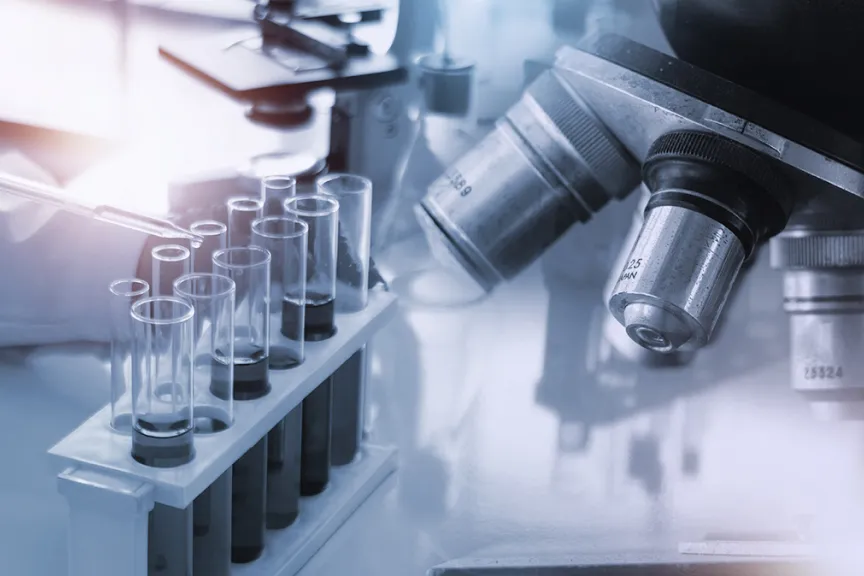Our company is developing pharmaceuticals based on our research into periostin, targeting pathological periostin. In particular, we are focusing on the development of new treatments for cases of metastatic recurrence, including triple-negative breast cancer (TNBC). TNBC is a serious disease that is more likely to affect younger women, with a 5-year survival rate of less than 50%. We are making steady progress toward clinical trials with the aim of delivering new treatment options as early as possible.
We have developed multiple pathological periostin-specific neutralizing antibodies, and in collaboration with The University of Osaka, we are accelerating the development of innovative treatments by incorporating cutting-edge technologies.

The key strengths of our drug discovery assets are the development of specific neutralizing antibodies against pathological periostin and innovative diagnostic agents for analyzing pathological periostin expression. By combining these, we can identify patients whose condition is caused by the expression of pathological periostin, and we have a collection of technologies with high potential for developing breakthrough therapies for progressive conditions such as intractable inflammatory diseases, including cancer, diabetic retinopathy, and acute myocardial infarction. We are focusing on the development of antibody drugs targeting periostin, and have accumulated globally recognized research results in this field.

Another one of our strengths is our ability to develop specific neutralizing antibodies against pathological periostin. This allows us to precisely suppress the abnormal activity of periostin in various progressive pathological conditions such as cancer and fibrosis. These antibodies act only in specific pathological environments, minimizing off-target effects on healthy tissues and ensuring a high level of safety.
This technology establishes a competitive advantage over other companies and expands treatment options for diseases with significant unmet medical needs. Furthermore, since it targets disease areas with high unmet medical needs, it is expected to gain strong traction in the international market.
Periostin is one of the components of the extracellular matrix that provides structural support for tissues, and it plays an important role in aiding the adhesion of cells to their surroundings. [Also, consider: "Periostin is a component of the extracellular matrix that provides structural support for tissues. It also plays an important role in aiding the adhesion of cells to their surroundings."] While periostin contributes to the growth and repair of healthy tissue, excess production has been linked to a variety of conditions, including cancer, diabetic retinopathy, acute myocardial infarction, and other intractable inflammatory diseases.


We are particularly interested in pathological periostin and are aiming to develop new treatments for intractable diseases by inhibiting its action. Our research focuses on developing [You could also use "formulating" here if you wanted to avoid the repetition of "develop" and "developing".]antibodies that specifically suppress the pathological function of periostin, with the aim of rapidly delivering safe and highly effective treatments to patients suffering from cancer and fibrosis.
We will continue to boldly take on challenges in the future, aiming to create new treatments for intractable diseases. In particular, we will continue to make further progress in the development of innovative antibody drugs targeting pathological periostin, and work hard to establish treatments for metastatic recurrent HER2-negative breast cancer and other intractable diseases. However, there are numerous issues that need to be addressed before a treatment can be put into practical use. Successfully completing clinical trials, obtaining regulatory approval, and bringing a product to market each have their own unique set of challenges. Nevertheless, we will continue to meet these challenges by making full use of our technological capabilities and collaborative framework with academia, and fulfill our mission of delivering the best possible treatments to patients.